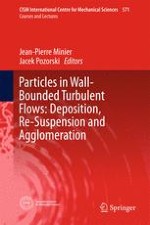2017 | Book
Particles in Wall-Bounded Turbulent Flows: Deposition, Re-Suspension and Agglomeration
Editors: Jean-Pierre Minier, Jacek Pozorski
Publisher: Springer International Publishing
Book Series : CISM International Centre for Mechanical Sciences
